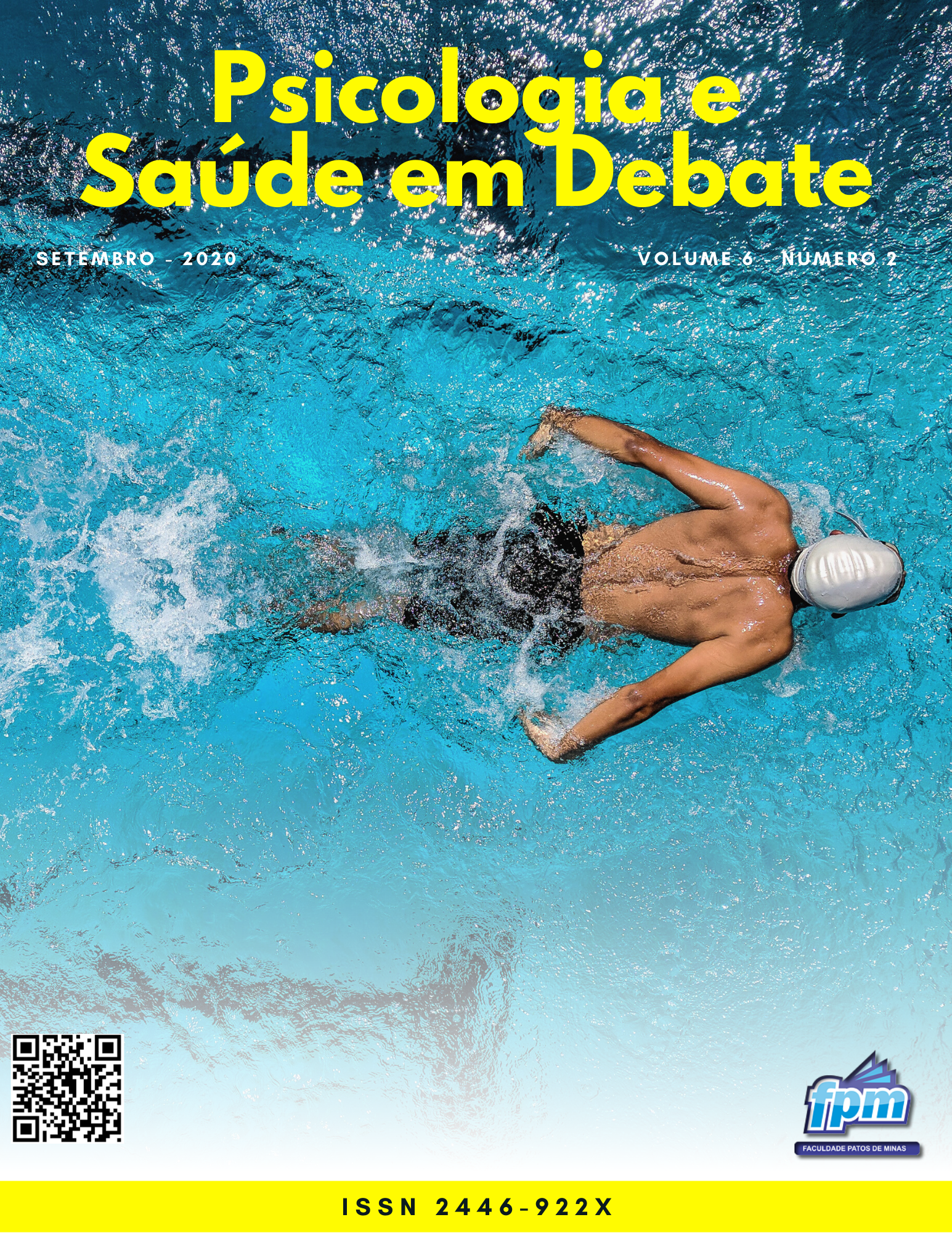MOTIVATION FACTORS OF PHYSICAL EXERCISE PRACTITIONERS IN THE CITY OF PETROLINA-PE: a comparative study
DOI:
https://doi.org/10.22289/2446-922X.V6N2A4Keywords:
Motivation, Exercise, Self-Determination TheoryAbstract
This study analyzed the motivation factors of 203 practitioners of physical exercise in the city of Petrolina-PE according to sociodemographic data. The instruments used were the Exercise
Motivations Inventory-2 (EMI-2) and a questionnaire with questions regarding gender, age, marital statust monthly income, type of exercise, practice time and weekly practice frequency. Data analysis was conducted using the Mann-Whitney and Kruskal-Wallis "U" tests (p <0.05). The results showed that men presented higher scores in the factors: physical condition, fun, health rehabilitation, competition and social recognition, while women presented higher scores only in health rehabilitation. Married and widowed / divorced individuals presented higher values for disease prevention than single individuals. Married subjects presented higher scores on factors: stress control, fun and affiliation. People who receive more than 2 minimum wages are more motivated by weight control and health rehabilitation, and individuals who exercise more often during the week have higher rates of motivation for stress management, fun, affiliation, and rehabilitation health and competition. It was concluded that the sociodemographic variables are factors involved in the motivation for physical exercise.
Downloads
References
Alves, J., & Lourenço, A. (2003). Tradução e adaptação do Questionário de Motivação para o Exercício (Exercise Motivation Inventory 2 – EMI2). Desporto, Investigação & Ciência, 2, 3-11.
Bauman, A. E., Reis, R. S., Sallis, J. F., Wells, J. C., Loos, R. J., & Martin, B. W. (2012). Correlates of physical activity: why are some people physically active and others not? The Lancet, 380(9838), 258–271. DOI: 10.1016/s0140-6736(12)60735-1
Dacey, M. (2008). Motivação intrínseca e extrínseca dos adultos mais velhos em relação à atividade física. American Journal of Health Behavior, 32 (6). DOI: 10.5993/ajhb.32.6.2
Edmunds, J., Ntoumanis, N., & Duda, J. L. (2006). A test of Self-Determination Theory in the exercise domain. Journal of Applied Social Psychology, 36(9), 2240-2265. DOI: 10.1111/j.0021-9029.2006.00102.x
GUEDES, Dartagnan Pinto; LEGNANI, Rosimeide Francisco Santos and LEGNANI, Elto. Propriedades psicométricas da versão brasileira do Exercise Motivations Inventory (EMI-2). Motriz: rev. educ. fis. [online]. 2012, vol.18, n.4, pp.667-677. ISSN 1980-6574. DOI: 10.1590/S1980-65742012000400005
Guedes, D. P., Legnani, R. F. S., & Legnani, E. (2013). Motivo de exercício em uma amostra de universitários brasileiros. Motriz: Revista de Educação Física, 19 (3), 590-596. DOI: 10.1590/S1980-65742013000300009
Liz, C. M., & Andrade, A. (2015). Análise qualitativa dos motivos de adesão e desistência da musculação em academias. Revista Brasileira de Ciências do Esporte, 38(3), 267-274. DOI: 10.1016/j.rbce.2015.11.0050101-3289
Markland, D., & Ingledew, D. K. (1997). The measurement of exercise motives: Factorial validity and invariance across gender of a revised Exercise Motivations Inventory. British Journal of Health Psychology, 2(4), 361–376. DOI: 10.1111/j.2044-8287.1997.tb00549.x
Martinez, C. T., Gillespie K., & Bale, S. (2015). Exercise Motivation: The Role of Gender, Age, and Body Mass Index. The International Journal of Health, Wellness, and Society, 4 (2): 55-66. DOI: 10.18848/2156-8960/CGP/v04i02/41109
Matias T. S., Rolim M. K. S. B., Kretzer F. L., Schmoelz C. P., & Andrade A. (2010). Satisfação corporal associada a prática de atividade física na adolescência. Motriz, 16(2), 370-378. DOI: 10.5016/1980-6574.2010v16n2p370
Mcewan, T., Tam-Seto, L., & Dogra, S. (2016). Perceptions of Sedentary Behavior Among Socially Engaged Older Adults. The Gerontologist, 1-10. DOI: 10.1093/geront/gnv689
Rigby, C. S., & Ryan, R. M. (2018). Self-Determination Theory in Human Resource Development: New Directions and Practical Considerations. Advances in Developing Human Resources, 20(2), 133–147. DOI: 10.1177/1523422318756954
Ryan, R. M., & Deci, E. L. (2000). Self-determination theory and the facilitation of intrinsic motivation, social development, and well-being. American Psychologist, 55(1), 68-78. DOI: 10.1037/0003-066X.55.1.68
Silva, M. N., Vieira, P. N., Coutinho, R. S., Minderico, C. S., Matos, M. G., Sardinha, L. B., & Teixeira, P. J. (2009). Usando a teoria da autodeterminação para promover a atividade física e controle de peso: um estudo controlado randomizado em mulheres. Journal of Behavioral Medicine, 33 (2), 110-122. DOI: 10.1007/s10865-009-9239-y
Standage, M. (2012). Motivation: Self-Determination Theory and Performance in Sport. Em Murphy, S. M. (Ed.). The Oxford Handbook of Sport and Performance Psychology, 234. DOI: 10.1093/oxfordhb/9780199731763.01
Standage, M., & Ryan, R. M. (2012). Self-Determination Theory and Exercise Motivation: Facilitating Self-Regulatory Processes to Support and Maintain Health and Well-Being. Em Roberts, G. C., & Treasure, D. C. (Eds.), Advances in Motivation in Sport and Exercise (pp. 233-270). Champaign, IL: Human Kinetics.
Tavares Junior, A. C., & Planche, T. C. (2016). Motivos de desistência da prática de exercícios físicos em academia: estudo de caso com mulheres em Pirassununga-SP. Saúde em Revista, 16(43), 63-70. DOI: 10.15600/2238-1244/sr.v16n43p63-70
Teixeira, P. J., Carraça, E. V., Markland, D., Silva, M. N., & Ryan, R. M. (2012). Exercise, physical activity, and self-determination theory: A systematic review. International Journal of Behavioral Nutrition and Physical Activity, 9(1), 78. DOI: 10.1186/1479-5868-9-78
Thøgersen-Ntoumani, C., & Ntoumanis, N. (2006). The role of self-determined motivation in the understanding of exercise-related behaviours, cognitions and physical self-evaluations. Journal of Sports Sciences, 24(4), 393–404. DOI: 10.1080/02640410500131670
Wilson, P. M., Mack, D. E., & Grattan, K. P. (2008). Understanding motivation for exercise: A self-determination theory perspective. Canadian Psychology/Psychologie canadienne, 49(3), 250-256. DOI: 10.1037/a0012762
Zervou, F., Stavrou, N. A. M., Koehn, S., Zounhia, K., & Psychountaki, M. (2017). Motives for exercise participation: The role of individual and psychological characteristics. Cogent Psychology, 4(1). DOI: 10.1080/23311908.2017.1345141
Downloads
Published
How to Cite
Issue
Section
License
Copyright (c) 2020 Psicologia e Saúde em debate

This work is licensed under a Creative Commons Attribution-NonCommercial-NoDerivatives 4.0 International License.
The authors declare that they participated in the elaboration of the manuscript in question, and that the cited manuscript is original and has not been previously published in part or in whole and that no other similar manuscript under their authorship is published or under analysis by another journal, whether printed or electronic. They further declare that they have not violated or infringed upon any copyright or other proprietary rights of other persons, and that all quotations in the text are true facts or based on research of considerable scientific accuracy. The authors undertake, when requested, to provide information to the editors regarding the data in this manuscript.
The magazine follows the Creative Commons standard (BY NC ND), which allows the remix, adaptation and creation of works derived from the original, even for commercial purposes. New works must contain mention of the author(s) in the credits. The site uses Open Journal Systems, a free open source system for managing and publishing journals developed with support and distribution by the Public Knowledge Project under the GNU General Public License.
































